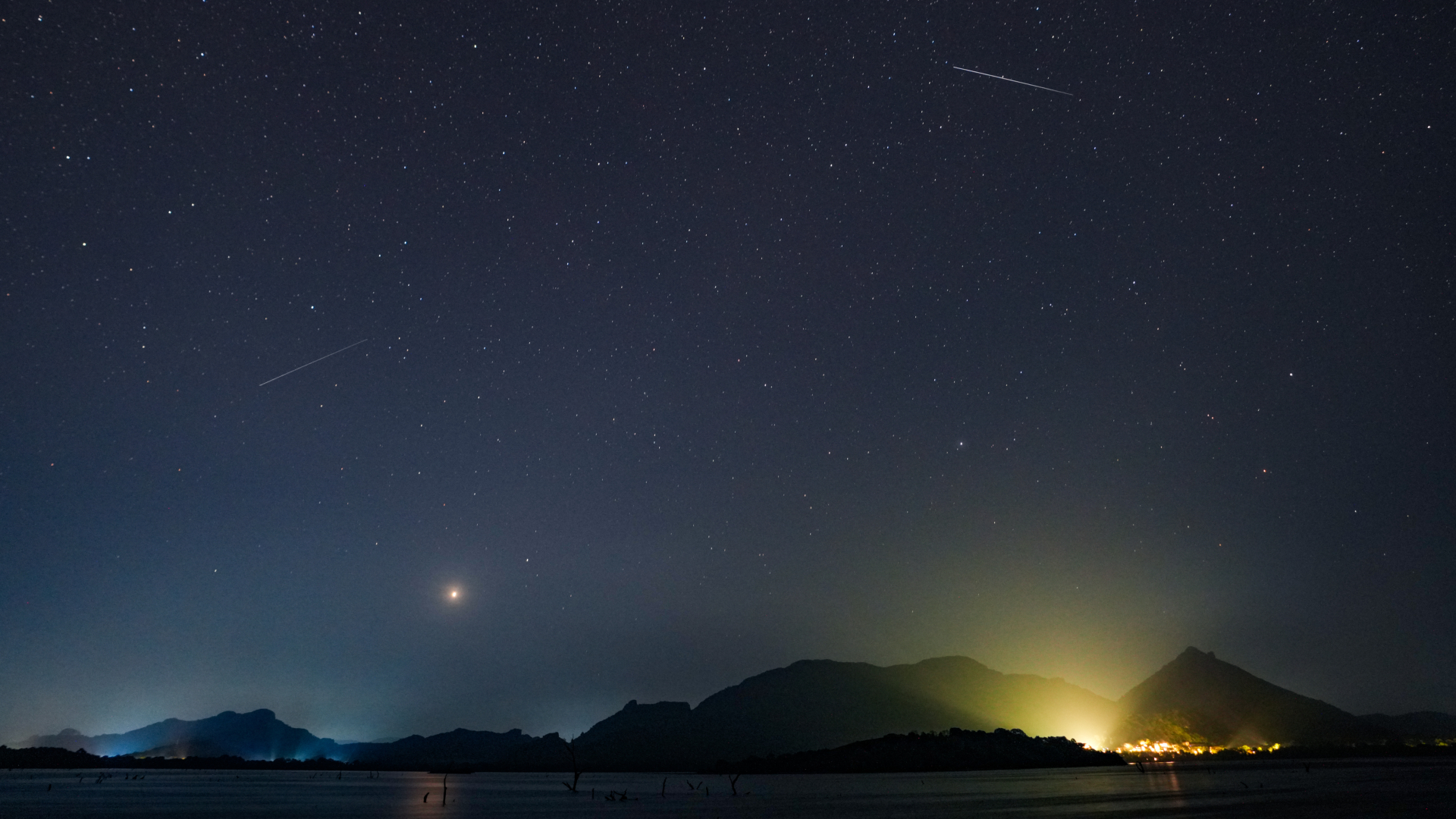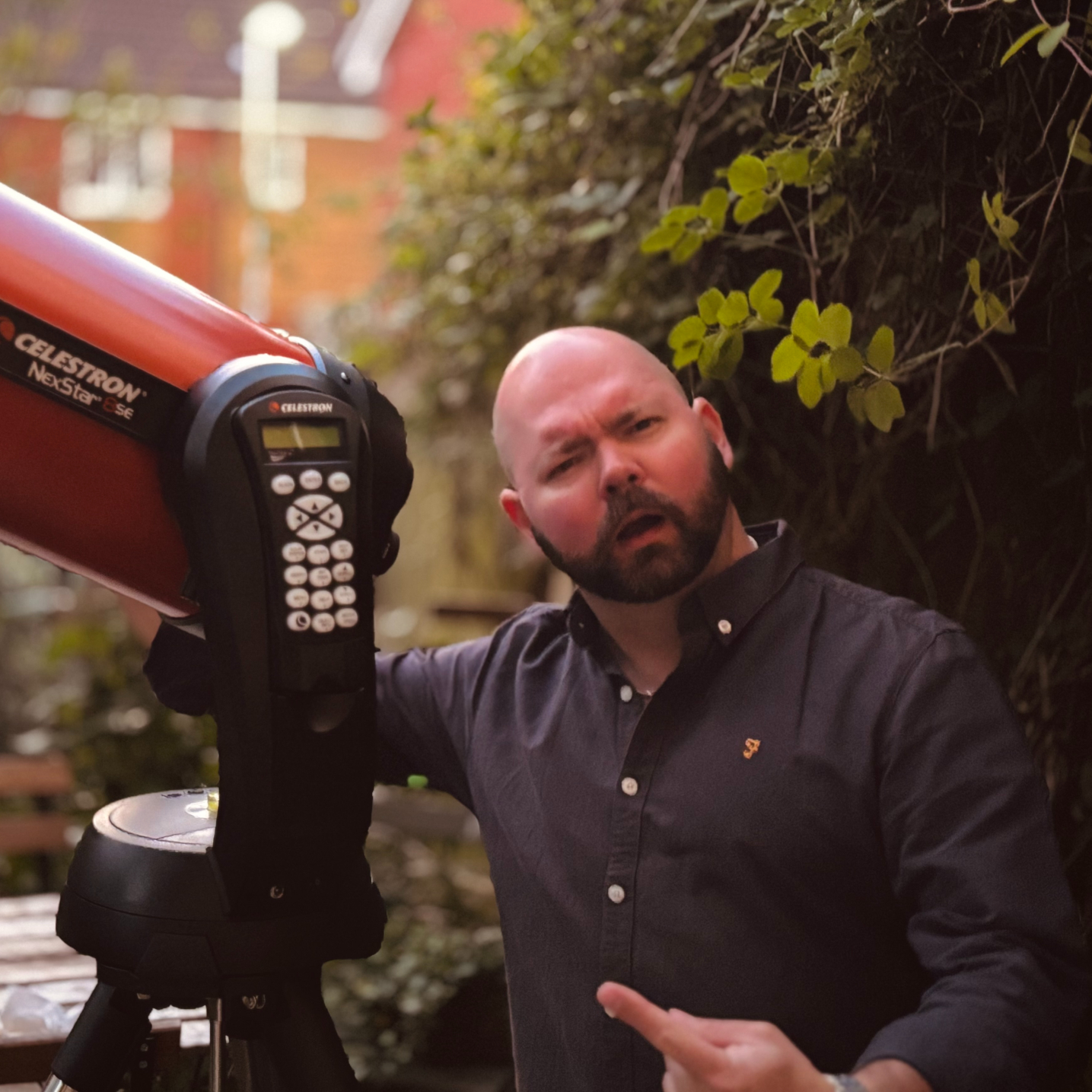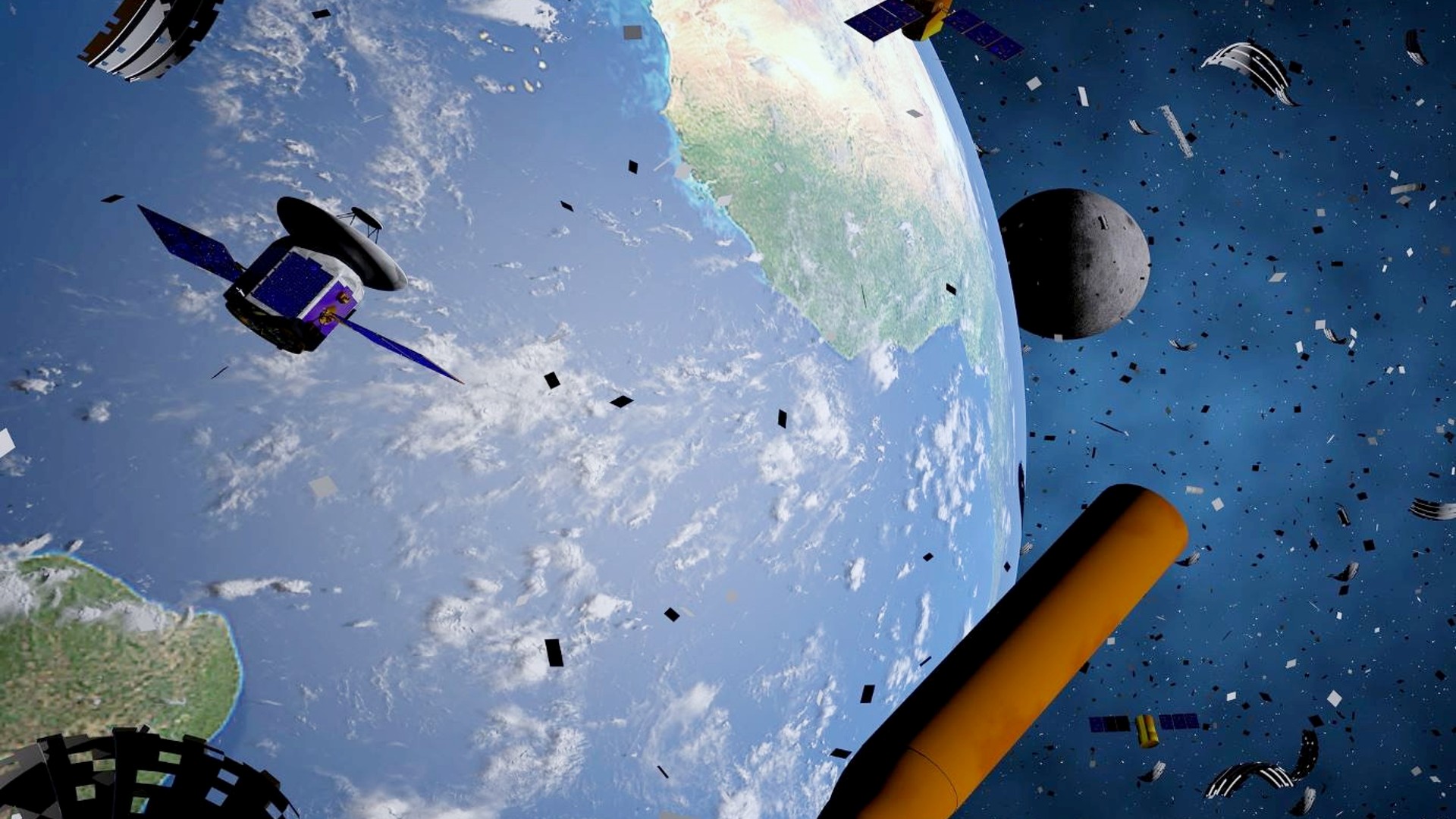Eta Aquarid meteor shower 2025 delights stargazers around the world with dramatic shooting stars (photos)
The Eta Aquarid meteor shower peaked on May 5-6, and the astrophotography community were there to watch it unfold.

The Eta Aquarid meteor shower peaked on May 6, delighting skywatchers with a spectacular cosmic light show as debris from Halley's Comet careened into Earth's atmosphere to form majestic 'shooting stars' that were visible to stargazers around the world.
The peak of the 2025 Eta Aquarid shower came as Earth passed through the densest section of Halley's debris trail, during which NASA estimates that up to 50 meteors could be visible crisscrossing the night sky for viewers in the southern hemisphere. Stargazers in the north were treated to a more modest rate of just 10 meteors per hour.
If you missed the peak, there's absolutely no need to despair! The Eta Aquarids will continue to be active until May 21, albeit at a reduced rate, so there's still plenty of opportunities to catch a shooting star before Earth leaves Halley's debris field behind. Read on to see some of the most awe-inspiring views of the Eta Aquarids captured by talented members of the stargazing community.
Delailah Bee captured a stunning vista of the Milky Way, complete with meteors, during a camping trip to Tamblingan Lake in Indonesia on May 4. The photographer snapped the scene between the hours of 2-4 a.m. local time using a POCO X5 Pro smartphone.
A post shared by Delailah Bee (@itsmedelailahbee)
A photo posted by on
Minnesota-based Twitter/X user @EricTheSpaceCat also posted a compilation of Eta Aquariid meteors leaving long trails across the night sky as they barrelled through Earth's atmosphere at speeds of roughly 40 miles per second.
Meteors from this morning.The last 3 are likely eta Aquariids. The eta Aquariid meteor shower is currently active and expected to peak on the night of 5/5-5/6.The source of the eta Aquariid meteor shower is the famous comet 1P/Halley "Halley's Comet". pic.twitter.com/ZXEzbRituEMay 4, 2025
X user @MyDronePro captured a shot of an Eta Aquarid from their home in Olney, Maryland, on the night of May 2, as the meteor shower was approaching its peak.
Olney, MD - Last night — a glowing eta Aquariid meteor streaking across the sky! The eta Aquariids will peak on Tuesday 6th May 2025. #MeteorShower pic.twitter.com/9m5E6Yf2OaMay 3, 2025
Meanwhile, residents of Pocatello, Idaho, were graced with the manifestation of a fireball in the post-sunset hours of May 3, which flashed brightly in the night sky before quickly disappearing from view.
Breaking space news, the latest updates on rocket launches, skywatching events and more!
The Eta Aquariid meteor shower sighting in Pocatello, Idaho. ☄️ pic.twitter.com/1IFwuSVi27May 4, 2025
The same cosmic visitor was seemingly also recorded by Reddit user Jough83's smart doorbell camera from its vantage point in southwest Montana around the same time.
Caught the meteor on my doorbell. from r/Bozeman
Photographer Mathew Browne posted this stunning view on Instagram of a meteor photobombing his nighttime shot of the Church Doors Cove in Pembrokeshire, UK, at 4 a.m. local time on the night of April 28. It's worth noting here that both the Eta Aquarid and the Pi Puppid meteor showers were active around this time. It's also possible that the meteor captured by Browne wasn't part of either annual shower but was instead a sporadic meteor — a random space rock not associated with any known meteor stream, which enters Earth’s atmosphere at any time of year.
A post shared by Mathew Browne (@mathewbrowne)
A photo posted by on
Finally, Reddit user LukaBrattzi caught a speeding meteor while filming a dramatic lightning storm raging in the skies over Austin, Texas, on a GoPro camera around 8:40 local time local time in the runup to the Eta Aquarid peak.
A meteoric UFO? from r/Austin
Next encounter with Halley's debris
Stargazers will be treated to another display of shooting stars when Earth takes its second yearly dive through Halley's debris trail in the latter months of 2025, heralding the onset of the Orionid meteor shower. The Orionids' point of origin — or radiant — is located in the constellation Orion, and peaks on the nights of Oct. 22-23. Night sky enthusiasts looking to explore the solar system and beyond should check out our guides on the best binocular and telescope deals available in 2025.
Before you head out stargazing, be sure to check out our guide on how best to photograph fast-moving meteors, and to peruse our guides on the best cameras and the best lenses for astrophotography if you're looking to upgrade your gear.

Anthony Wood joined Space.com in April 2025 after contributing articles to outlets including IGN, New Atlas and Gizmodo. He has a passion for the night sky, science, Hideo Kojima, and human space exploration, and can’t wait for the day when astronauts once again set foot on the moon.
You must confirm your public display name before commenting
Please logout and then login again, you will then be prompted to enter your display name.
